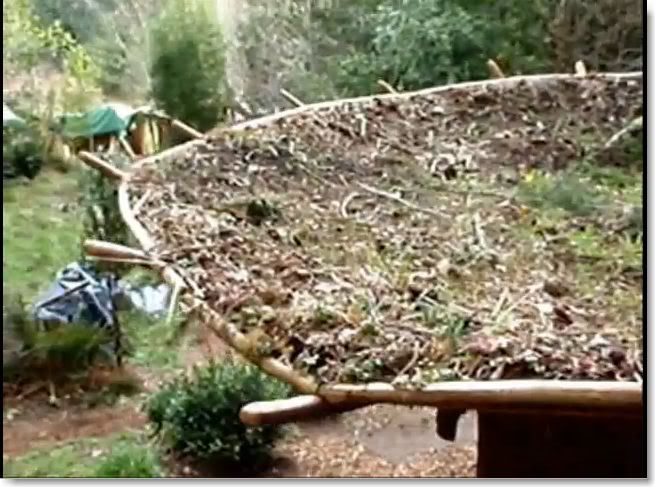No, Paul. The pond liner is fine if it extended to the total extent of the roof with a facia of some sort providing a drip edge at the bottom as in Mike Oehler's instructions for the high edge of the house in the uphill patio area. The problem is that the roof support sticks are extended out into the rain past the edge of the pond liner roof.
The way I see it, soince they slope downhill, rain will hit them outside of the roof and adhere to them, following them under the roof and into the house.

It could be possible to put a drip stop under the bottom of the support member that would intercept the drip at the bottom of the member to make it drip to the ground there before getting all of the way into the house. One would be required on each down sloping member.










